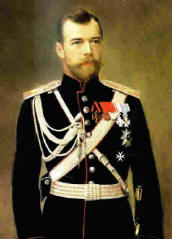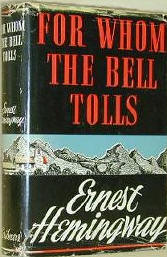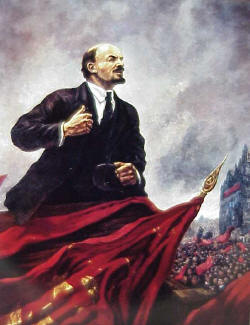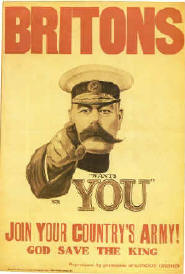Back to Honors Seminars Home Page) America Between the Wars
This
course situates the justifications for America's end of isolationism and
entry into the "Great War," concluding with the entry of America into World
Students unfortunately know little of their national heritage in terms of what we may term modern history/culture: most importantly, the interconnections between war, economy, and the arts. That history gives significance not only to America's entry as a world power on the global stage, but details as well the coming of age of American literature and culture. Not until the war against Spain and our belated entry into the European war does our nation begin to end its regional divisiveness and to recognize its artistic voice and interrelatedness to European culture.
The class will emphasize for students the importance of
the expatriates of literature--such as Hemingway and Fitzgerald--who gave to
our country its uniquely American voice in literature following the Great
War. The depression of the Thirties, as the Great War had done for
literature, provided the fodder for a new wave of writing, most especially
in the drama, which developed and thrived through the National Theater and
numerous federal grants awarded under the auspices of labor. American drama, which lagged so greatly behind fiction, was not long removed from the Old World melodramas that dominated the national stage. But in a time of want, surprisingly, the national subsidization of the arts in America provoked the voices of such as O'Neill and Odets on the stage, even as political turmoil encouraged the efforts of Steinbeck, Toomer, and Wright. And while the arts were inspired by the necessities brought about by the Depression, a new emerging art form, the cinema, attempted to distract us from poverty, with notable escapist films such as "It Happened One Night," "Duck Soup," "The Wizard of Oz," and "Gone With the Wind." Students will realize, it is hoped, that historical epochs are comprised of multi-perspectives wrought by artistic achievements. Literary and cinematic reflections The "Great War," its after-effects, and trepidations about the future should offer students a unique cultural view of a complex, transitional period in America's past and coming of age in the family of nations.
Our study
together seeks to link and to make known the impetuses brought about by
America's end of isolationism and entry into the Great War, clarify the
singularly American voice in literature, drama, and film in the thirties,
and then investigates the beginnings
Upper-level students should have the necessary background for a grounding in the fundamentals of this course, having, most importantly, taken those introductory classes both in literature and history that will provide the necessary perspective for situating the texts in proper context. As a junior-level class, this course should nicely blend two disciplines and offer as well an introduction into America's emerging art form, the cinema, which had not as yet recognized its own relevance and importance in establishing itself as a collector and purveyor of society and culture.
As
a junior-level course, students should have a suitable base, made possible
by a general curriculum, for appreciating the historical and artistic
fundamentals of the course. And, given the interdisciplinary approach of the
class, no one area of study will focus to the extent that students would
find if majoring in literature or
 history, since this class will blend the
two, with the literary reflecting the historical. In our discussions, the
course will aim to use literature to personalize and to situate experience
supplemented by readings in history. While not an inordinate amount of time
to cover, the historical/literary periods represented in the class offer a
manageable period that should, it is hoped, inspire students toward more
specific research if so
desired, that which might be expected of seniors focusing within their
respective disciplines. history, since this class will blend the
two, with the literary reflecting the historical. In our discussions, the
course will aim to use literature to personalize and to situate experience
supplemented by readings in history. While not an inordinate amount of time
to cover, the historical/literary periods represented in the class offer a
manageable period that should, it is hoped, inspire students toward more
specific research if so
desired, that which might be expected of seniors focusing within their
respective disciplines.
Course
Outline
Week one: Voices of War: the poetry of McCrae and fellow poets; Ginsburgh's The Clock; Tuckman's The Guns of August on reserve); [Film: "All Quiet on the Western Front"] Week two: Historical turmoil: isolationism, imperialism, and communism; readings from Pipe?s The Russian Revolution Week three: John Reed; American communism: Ten Days That Shook the World [Film: "Reds"] Week four: The "Expatriates" at home: Fitzgerald's The Great
Gatsby; readings from Dickstein's The
Gate's of
Week five: The New Conscience: Steinbeck's In Dubious Battle [Film: "The Grapes of Wrath"]
Week six: The Emergence of Drama: O'Neill: Desire Under the Elms Week seven: The Emergence of Drama cont.: Odets: Waiting For Lefty; readings from Gregory's The Silence of Memory and Jackson's The Spanish Republic and the Civil War Week eight and nine: New Voices: Toomer's Caine and Wright's Native Son (on tape)
Week ten: The American Expatriates: Hemingway's Stories of the Spanish Civil War and Rosenstone's Crusade of the Left
Week eleven: An Emerging New Art-form: Cinema Week twelve: The Maturation of Cinema
and the Studio System: West's Day of the Locust; Week thirteen: From the Spanish Civil War to Pearl Harbor; readings from Gregory's The Silence of Memory
Week fourteen: Another War: Jones. From Here to Eternity [Film: "From Here to Eternity"]
Week fifteen: America at War: The Naked and the Dead [Film: "Saving Private Ryan"]
Course Requirements
Besides
class discussion and lecture, students will be required to take two examinations,
a midterm and final, as well as to write
Special Features Students will be asked to set aside one night a week outside class for
five weeks in order to view the movies in their entirety?Thursday night at
7:00 p.m. is suggested, which will serve much as an outside-of-class reading
assignment might, with the benefit of group reaction to the material. The
films will also be made available to students individually for possible
scheduling conflicts.
The following represents a list of primary works that student's will read or view: Aldrich, John W. After the Lost Generation [selections]. Dickstein, Morris. Gates of Eden [selections].
Gregory, Adrian. The Silence of Memory: Armistice Day, 1919-1946 [selections].
Hill, John and Pamela Church Gibson. The
Oxford Guide to Film Studies
Hemingway, Ernest. Stories of the Spanish Civil War. Jackson, Gabriel. The Spanish Republic and the Civil War, 1931-1939. Mailer, Norman. The Naked and the Dead.
Odets, Clifford. Waiting for Lefty.
O?Neill, Eugene. Desire Under the Elms. Pipes, Richard. The Russian Revolution, 1899-1919
[selections]. Reed, John. Ten Days That Shook the World. Rosenstone, Robert. Crusade of the Left: The Lincoln Battalion in the Spanish Civil War.
Toomer, Jeane. Caine. Tuckman, Barbara. The Guns of August [selections]. West, Nathaniel. Day of the Locust.
World War I Poetry (Penguin).
Films: "All Quiet on the Western Front." Directed by Louis Milestone. "From Here to Eternity." Directed by Fred Zinnemann. "The Grapes of Wrath." Directed by John Ford. "Reds." Directed by Warren Beatty. "Saving Private Ryan." Directed by Stephen Spielberg.
|
|
|
 War II. Between these two cataclysmic events, the course aims to identify
the artistic responses, supplemented by some of the historical significances
of the American Nineteen Twenties, Thirties, and early Forties, of a nation
that emerges as a world power, as it culturally matures.
War II. Between these two cataclysmic events, the course aims to identify
the artistic responses, supplemented by some of the historical significances
of the American Nineteen Twenties, Thirties, and early Forties, of a nation
that emerges as a world power, as it culturally matures. 
 of how that voice changes with the advent of a new war, one provoked by
hostilities against its own territory. By means of the interdisciplinary
modes of study, students should appreciate the multi-layered modes of
artistic expression that arose out of America's political entry into the
world arena and the economic depression that caused many of those arts to
flourish. A view of history, therefore, may come through the artistic
expressions of those who themselves attempt to face that left behind in
order to confront the present--much like Steinbeck's Joad family, who fear
that without their photos, mementos, and reminiscences from Oklahoma they
will have no past when settled in California. Such an approach may afford
Honors students a unique historical perspective by virtue of artistic
reflection, supplemented with historical record, as one encouraged in the
upper-level seminars.
of how that voice changes with the advent of a new war, one provoked by
hostilities against its own territory. By means of the interdisciplinary
modes of study, students should appreciate the multi-layered modes of
artistic expression that arose out of America's political entry into the
world arena and the economic depression that caused many of those arts to
flourish. A view of history, therefore, may come through the artistic
expressions of those who themselves attempt to face that left behind in
order to confront the present--much like Steinbeck's Joad family, who fear
that without their photos, mementos, and reminiscences from Oklahoma they
will have no past when settled in California. Such an approach may afford
Honors students a unique historical perspective by virtue of artistic
reflection, supplemented with historical record, as one encouraged in the
upper-level seminars.

.jpg)
 three short papers of
approximately five pages on each of the three areas of study: literature,
film, or history. The assignment of individual student reports will
supplement lecture and discussion. Students will also need to set aside
four Thursday evenings, beginning at 7:00 p.m. for viewing the movies in
their entirety as a group. We will space those Thursdays out over the
course of the semester; but please, if you have any conflicts, do not
register for this class; it is essential that we use those evenings for
group responses and to avoid breaking the continuity of watching them in
parts during valuable class time.
three short papers of
approximately five pages on each of the three areas of study: literature,
film, or history. The assignment of individual student reports will
supplement lecture and discussion. Students will also need to set aside
four Thursday evenings, beginning at 7:00 p.m. for viewing the movies in
their entirety as a group. We will space those Thursdays out over the
course of the semester; but please, if you have any conflicts, do not
register for this class; it is essential that we use those evenings for
group responses and to avoid breaking the continuity of watching them in
parts during valuable class time.


